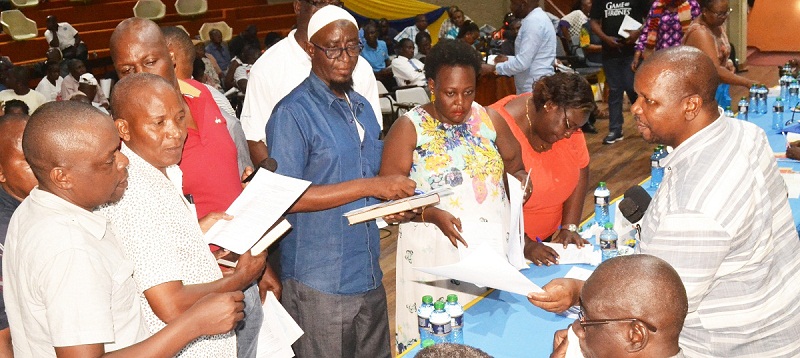By Sammy Chivanga
When Covid-19 struck, it was expected that many Savings and Credit Cooperative Societies (Saccos) would face their biggest liquidity test.
And as an increased number of Sacco members applied for consumption loans, Sacco leaders such as the Kenya Union of Savings and Credit Co-operatives Ltd (Kuscco) called for caution.
But in a surprise turn of events, Saccos are now emerging from the pandemic awash with liquidity after applications for development and business loans dropped.
Sacco leaders say that the increased demand for consumption loans—usually of lower value compared to development and business loans—eased with time.
However, with many businesses and individuals putting on hold key plans such as expansion and improvement of infrastructure, development and business loans reduced, leaving Saccos with higher liquidity.
Safaricom Sacco CEO Joseph Njoroge says that the Sacco experienced a unique problem—that of a build-up in liquidity as members who were eying investments adopted a wait-and see approach due to Covid-19 situation.
“The loan applications really went down. The month of April was the worst but it later picked by July. The issue of wait and see played,” said Njoroge.
“People were only taking loans for consumption but most of our members kept off the big loans meant for development.”
The consumption loans were handled via its Pamoja loan, a six-month loan product priced at 0.8 per cent it introduced when Covid-19 struck.
The Kenya Police Sacco also experienced a similar situation of a build-up in liquidity, according to chairman David Mategwa.
We were projecting people to take more loans but they did not reach the level we had anticipated. We were prepared for the crisis and we didn’t feel stretched,” said Mategwa.
The Sacco has been increasing its capital position over time and building its reserve levels, which Mategwa says offered a strong buffer.
For Boresha Sacco, CEO Moses Chebor says that save for public school teachers, other members struggled to keep up with loans servicing.
However, he reckons that monthly loan applications went down after the virus struck Kenya on March 13, and this meant that the sacco found itself with excess money.
He says the focus will now be on rescheduling repayments for existing loans and hope that the demand for new loans will start rising as the economy gradually reopens.
“Our lending came down from about Sh100 million per month to below Sh80 million. We didn’t know who to lend to and people were also shying off from loans,” said Chebor.
Imarika Sacco chairman Renson Ndoro told the Sacco Review that his organisation also experienced a similar situation.
He says that whereas there were some members who were going for survival loans, most of the members were not even willing to take loans because of the damaged business environment.
“In fact our liquidity levels rose because most of our members never came for loans due to the market situation. People were fearing about where to invest in Covid-19 environment,” said Ndoro.
Imarika Sacco CEO Daniel Masha said the sacco had to turn more into risk-based lending especially for businesses and members who had been laid off.
“We emphasised on risk-based lending to safeguard against high risk of default. We found ourselves with a lot of liquidity in the process,” said Masha.
Ndoro expects loan applications to start rising gradually in line with the easing of Covid-19 control measures.
Trans Nation Sacco CEO Luncham Mugambi says the decision by the government to keep paying teachers—majority who make up the Sacco— helped the Sacco avoid a cash crunch.
“We only felt a drop in business loans but other areas of business continued. That is why we afforded to open a new branch in Moyale,” said Mugambi.
Sacco Societies Regulatory Authority (Sasra) liquidity ratio guidelines requires deposit-taking (DT)- Saccos to at all times maintain a minimum of 15 per cent of its savings deposits and short-term liabilities in liquid assets.
The liquidity ratio is an important measurement parameter of how fast or quick a DT-Sacco is able to meet its short-term obligations.
Sasra says that the most critical of such short-term obligations are the payment on demand of the savings (FOSA) deposits.
In the aggregate, Sasra report shows that DT-Saccos last year maintained a liquidity ratio at 50.92 per cent, well above the prescribed minimum of 15 per cent.


